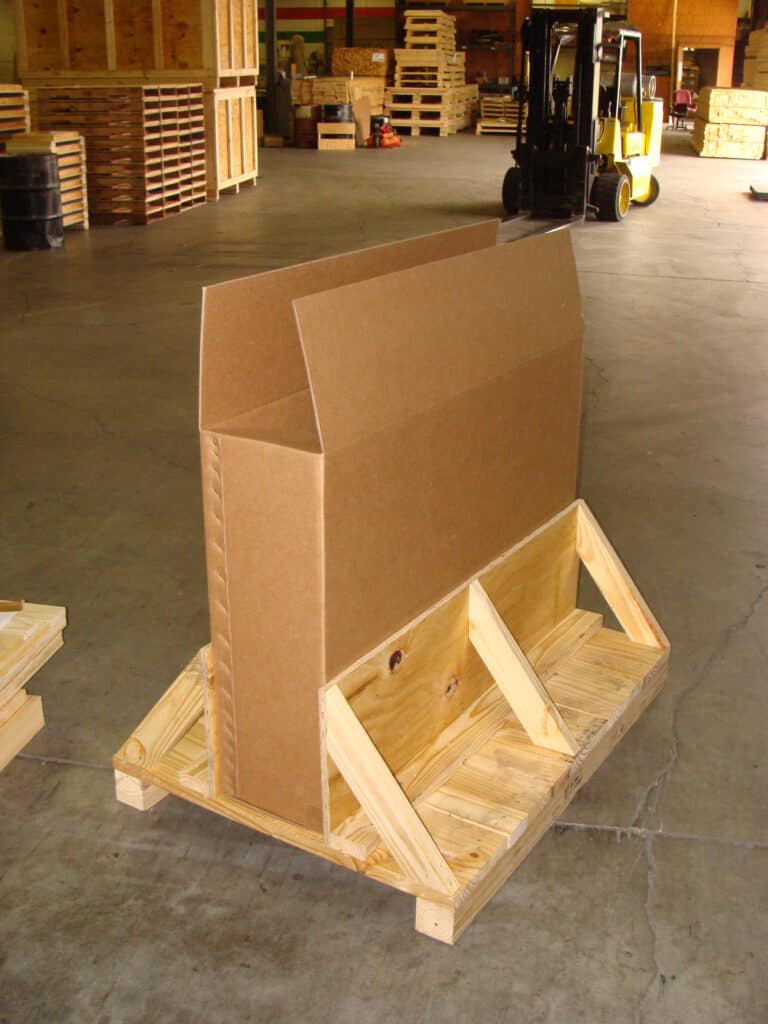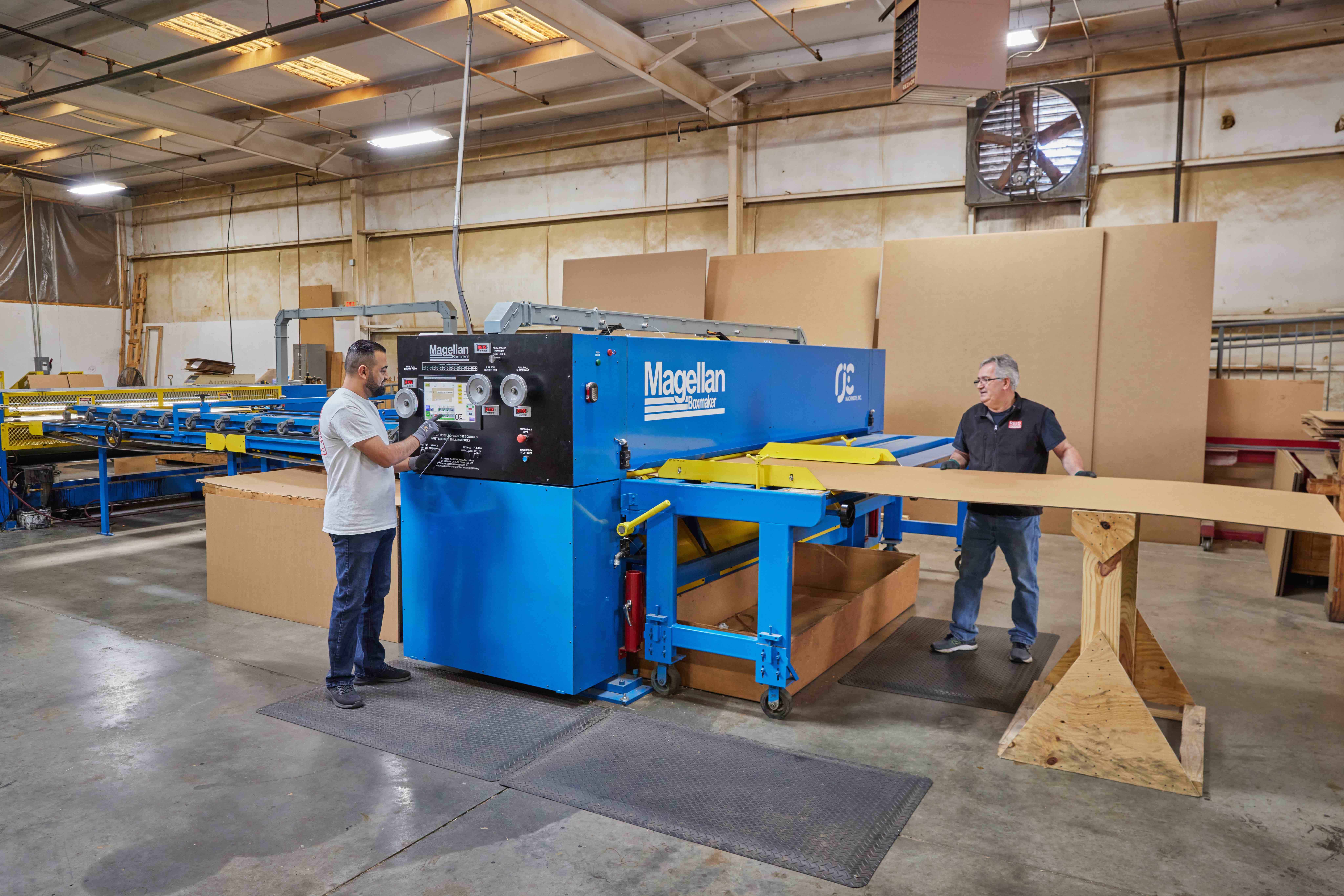Gluing vs Stitching: Which is the better method in corrugated packaging?
In the world of industrial packaging, corrugated boxes are a ubiquitous choice for shipping and storing various products. These boxes are typically constructed using one of two primary methods: gluing or stitching. But which method is better for your specific application? In this article we’ll discuss the two methods along with their advantages and drawbacks. Then we’ll discuss our particular way of bonding boxes at Reid Packaging, using a combination of glues or stitching.
Gluing Method
When you think of corrugated boxes, you probably think of boxes that are glued, as that tends to be more common for everyday consumer boxes. Here’s how it works: as the flat box moves through the automated assembly line, glue (or adhesive bond as we call it in the business) is applied to a flap that is then adhered to the other end of the flat sheet forming a box. The two glued surfaces must then be pressed together for as long as it takes for the glue to set. The length of time the glue needs to set is dependent on whether you are using hot glue or cold glue. We will discuss hot versus cold glue below.
Advantages of Gluing:
- Clean Appearance: Glued boxes often have a neater and more professional appearance compared to stitched ones, as there are no visible punctures or metal clips on the surface.
- Suitable for Customization: Gluing allows for easier printing and customization, as the smooth surface facilitates unblemished, high-quality printing of branding, instructions, or product information all the way out to the glued corner.
Drawbacks of Gluing:
- Drying Time: Glued boxes might require some drying time before they can be handled or stacked, which can impact production speed.
- Sealing Strength: Although glue can be more than strong enough for certain applications, it is never as strong as stitching. This is because gluing only adheres the outer layers of the material together, while stitching adheres all layers of the material together.
Cold Glue vs Hot Glue
Machine gluers in many corrugated assembly lines either apply hot glue or cold glue to the corrugated material. Hot glue takes less time to set, but it isn’t as strong. Whereas cold glue takes longer to set but is stronger. This is because cold glue seeps further into the layers of material before it sets, enabling it to create a stronger bond.
Stitching Method
Stitching is more common in heavy duty industrial applications (think triple wall) because it tends to be stronger. However, the stitches make the boxes less visually appealing and reduce the amount of printable space on one corner of the box. Here’s how it works: the box (in flat form) moves through a stitching machine that applies stitches (like large staples) to a flap and one side of the box.
Advantages:
- Strength and Stability: Stitching provides immediate structural stability and it tends to be a stronger bond, because the stitch adheres all layers of material, not just the outer layers of material.
- Faster Assembly: Stitching typically requires less assembly time compared to gluing, as there is no drying period involved. This can enhance production speed in certain contexts.
Drawbacks:
- Appearance and Customization: The presence of visible staples or stitches might not be aesthetically pleasing in some contexts. It also may limit the surface area available for printing or branding.
- Potential for Damage: Staples or stitches can potentially damage the packaged contents if they protrude into the interior space of the box, so it’s essential to work with a reputable stitching machine that is well-maintained. Some items might require extra cushioning to protect delicate surfaces from the stitches inside one corner of the box.

The Key To Strength: Outside or Inside Flap?
We have been mentioning that both stitching and gluing involve a flap that is glued or stitched to a side of the box. But whether that flap is outside of the constructed box or inside of it does have an affect on the strength of the bond.
A flap on the outside of the box results in a stronger box, but it is less visually appealing. A flap on the inside of the box results in cleaner visuals, but is less strong because the larger surface area (the side of the box) can press away from the smaller surface area more easily.
Our Approach To Gluing And Stitching Corrugated Boxes At Reid Packaging
At Reid, we are equipped to use both stitches and glue, and we also use both hot and cold glue. We have found that a combination of hot and cold glue can be the best approach for the strongest glue bond. The hot glue creates a faster bond, holding the material together while the cold glue seeps into the material and sets. We can apply both hot and cold glue to the same box, giving it superior strength without slowing down the drying process.
We also do stitching, with two fast and accurate stitching machines.
Our custom corrugated box technicians can talk you through the options and create the perfect industrial corrugated boxes for your application. Get in touch today.

